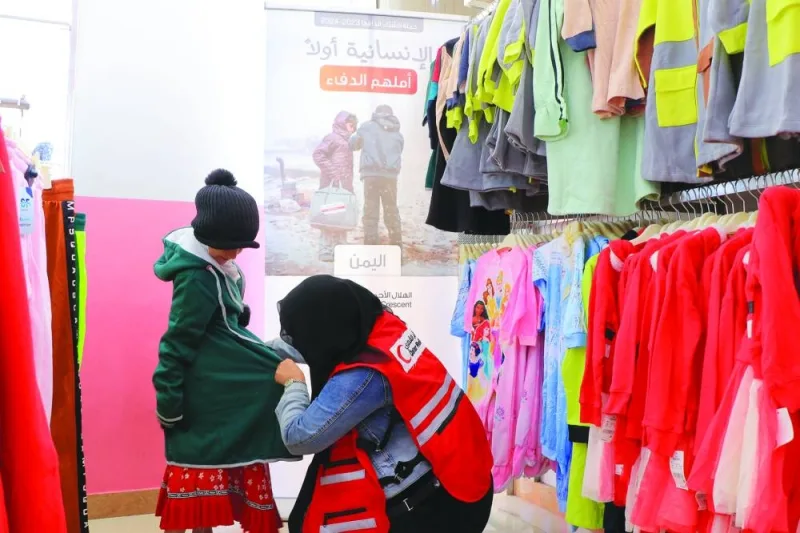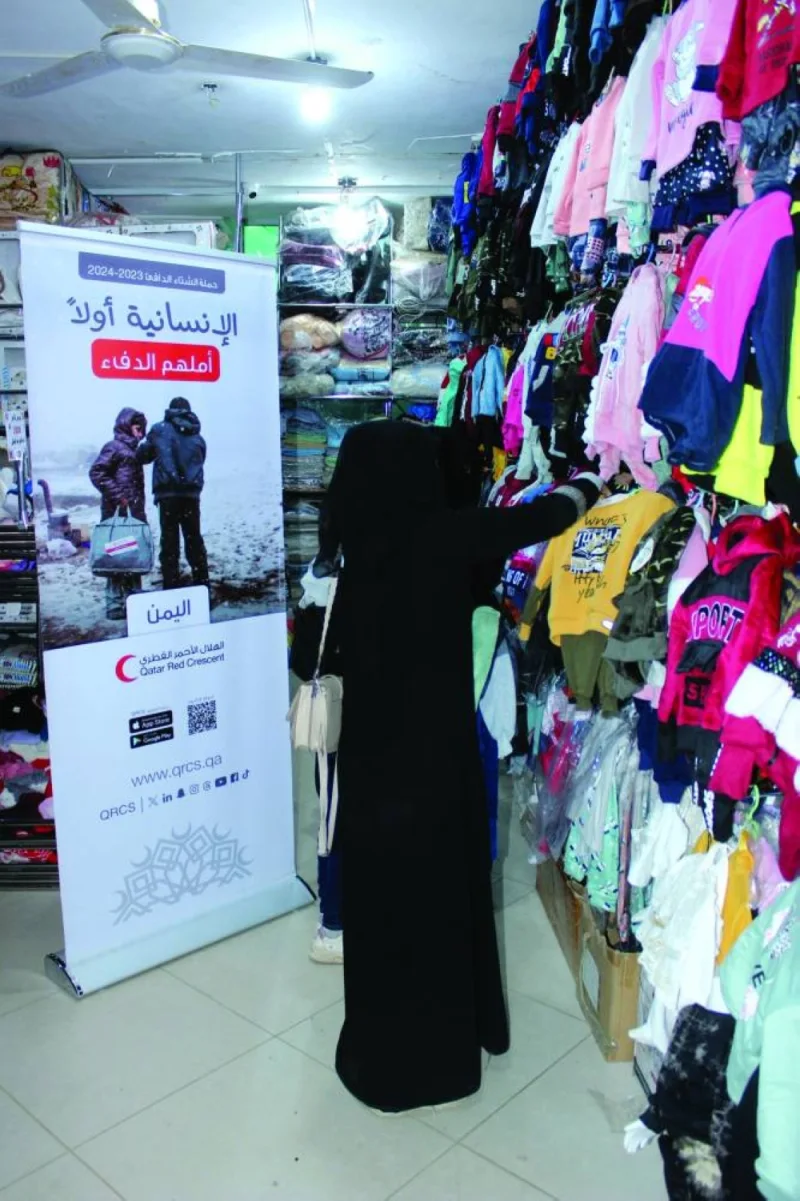The representation office of Qatar Red Crescent Society (QRCS) in Yemen has implemented a winterisation aid distribution project to meet the needs of 6,000 most vulnerable families in Sana’a, Taiz, Ma’rib, Ibb, and Dhale, at a cost of $274,466 (QR 1,000,428).
The project, under QRCS’ Warm Winter campaign “Humanity First, Hope for Warmth,” involved two phases, comprising distribution of 2,700 winterisation kits containing blankets and mattresses, and distribution of winter clothes for the benefit of 3,300 children.
During the inauguration ceremony in Ma’rib, Ali al-Marqat, Shelter Sector Officer at the governorate’s executive unit for internally displaced people (IDPs), said: “This aid will be handed over to the poor IDPs in Al-Wadi and Al-Madina districts and help cover some of the winter needs of poor people in the governorate.
“Ma’rib is a desert governorate where the temperature drops sharply during the winter. Hosting approximately 2.2mn IDPs, it needs more projects and humanitarian aid in food, medicine, and shelter. We call upon QRCS to provide more aid for the governorate, which bears the burden of 70% of IDPs in the entire country”.
In Taiz, Nabil Jamil, director-general of Planning and International Cooperation in the governorate, said: “QRCS has significant interventions and is at the heart of health, shelter, and water priorities in Taiz.
QRCS allocated 650 winterisation kits for some medical and social organisations, including the Sana’a-located Al-Amal Hospital for Psychiatric and Addiction Treatment.
Dr Mohamed Ibrahim al-Qashar, assistant general manager of the hospital, said: “Working against the scarce resources, we are trying to continue to receive the patients, offer high-quality services, and hire senior consultants and specialists. I would like to gratefully thank QRCS for their continuous support”.
The protracted conflict in Yemen is one of the world’s worst humanitarian crises. According to the International Organisation for Migration, it forced about 4.1mn Yemenis to flee their homes and face difficult living conditions at camps. With the winter, challenges become even more serious, including harsh weather conditions and lack of adequate household needs.

Distribution of winter clothes in Sanaa.

QRCS distributes winter clothes in Taiz.


